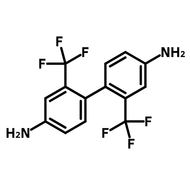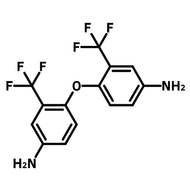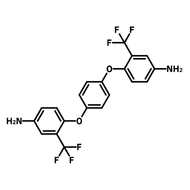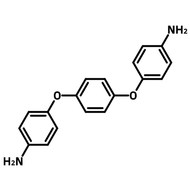5'-(4-Formylphenyl)-2',4',6'-trimethyl-[1,1':3',1''-terphenyl]-4,4''-dicarbaldehyde
CAS Number 2195343-70-3
Carbaldehyde Monomers, Chemistry Building Blocks, COF Ligands, Materials, Monomers, Porous Organic Frameworks
Covalent Organic Frameworks (COFs) Terphenyl Ligand
An aldehyde functionalised bridging ligand linker for COFs in application of fluorescence probe sensors, plant biology and detection of nitrofurantoin
Triangular 5'-(4-Formylphenyl)-2',4',6'-trimethyl-[1,1':3',1''-terphenyl]-4,4''-dicarbaldehyde (TMTFPB), CAS number 2195343-70-3, has three methyl and three formylphenyl groups sitting on a benzene ring, alternating methyl and formylphenyl groups.
[(TTFB)4(ETTA)3]imine, termed COF-790, prepared from building blocks of 1,3,5-trimethyl-2,4,6-tris(4-formylphenyl)benzene (triangle) and 1,1,2,2-tetrakis(4-aminophenyl)ethene (square) into the fjh topology, exhibited permanent porosity and a high Brunauer–Emmett–Teller (BET) surface area of 2650 m2 g–1.
F-COF-2, also derived from 5’-(4-formylphenyl)-2’, 4’, 6’-trimethyl-[1, 1’: 3’, 1’-terphenyl]-4,4’’-dicarbaldehyde and 2,4,6-tristyryl s-triazine as the building block monomers, displayed combined skeleton and spatial rigidification endowed excellent fluorescence emission. F-COF-2 showed highly sensitive and selective nitrofurantoin (NFT) detection with a KSV value of 9.12 × 105 M–1, and limit of detection of 3.35 ppb.
MOF and COF ligands
Aldehyde ligand for cross-linked COF networks
Worldwide shipping
Quick and reliable shipping
High purity
>98% High purity
Facile reactions
Aldehyde possesses excellent reactivity
General Information
| CAS Number | 2195343-70-3 |
|---|---|
| Chemical Formula | C30H24O3 |
| Full Name | 5'-(4-Formylphenyl)-2',4',6'-trimethyl-[1,1':3',1''-terphenyl]-4,4''-dicarbaldehyde |
| Molecular Weight | 432.51 g/mol |
| Synonyms | TMTFPB, TTFB, 1,3,5-Trimethyl-2,4,6-tris(4-formylphenyl)benzene |
| Classification / Family | Terphenyls, COF ligands |
Chemical Structure
![2195343-70-3 - 5'-(4-Formylphenyl)-2',4',6'-trimethyl-[1,1':3',1''-terphenyl]-4,4''-dicarbaldehyde chemical structure](https://cdn.shopify.com/s/files/1/0823/0287/files/tmtfpb-2195343-70-3-chemical-structure-body_240x180.jpg?v=1702047371)
Product Details
| Purity | >98% |
|---|---|
| Melting Point | 247 – 248 °C |
| Appearance | White to yellow to orange powder/crystals |
MSDS Documentation
 5'-(4-Formylphenyl)-2',4',6'-trimethyl-[1,1':3',1''-terphenyl]-4,4''-dicarbaldehyde MSDS Sheet
5'-(4-Formylphenyl)-2',4',6'-trimethyl-[1,1':3',1''-terphenyl]-4,4''-dicarbaldehyde MSDS Sheet
Literature and Reviews
-
Combined Skeleton and Spatial Rigidification of AIEgens in 2D Covalent Organic Frameworks for Boosted Fluorescence Emission and Sensing of Antibiotics, Y. Tang et al., ACS Appl. Mater. Interfaces, 14 (33), 37853–37864 (2022); DOI: 10.1021/acsami.2c11052.
-
3D Covalent Organic Frameworks Selectively Crystallized through Conformational Design, H. Nguyen et al., J. Am. Chem. Soc., 142 (48), 20335–20339 (2020); DOI: 10.1021/jacs.0c11064.
-
Materials genomics methods for high-throughput construction of COFs and targeted synthesis, Y. Lan et al., Nat. Commun., 9, 5274 (2018); DOI: 10.1038/s41467-018-07720-x.
-
Single-Crystal 2D Covalent Organic Frameworks for Plant Biotechnology, S. Wang et al., J. Am. Chem. Soc., 145 (22), 12155–12163 (2023); DOI: 10.1021/jacs.3c01783.
- Synthesis of Vinylene-Linked Two-Dimensional Conjugated Polymers via the Horner–Wadsworth–Emmons Reaction, D. Pastoetter et al., Angew. Chem. Int. Ed., 59, 23620–23625 (2020); DOI: 10.1002/ange.202010398.
Related Products
We stock a wide range of COF ligands available to purchase online. Please contact us if you cannot find what you are looking for.
![5'-(4-Formylphenyl)-2',4',6'-trimethyl-[1,1':3',1''-terphenyl]-4,4''-dicarbaldehyde CAS 2195343-70-3](http://www.ossila.com/cdn/shop/files/tmtfpb-2195343-70-3-chemical-structure-title.jpg?v=1702046856&width=240)
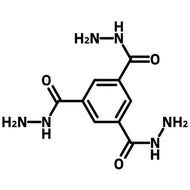
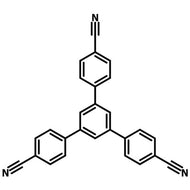
![4',4''',4'''''-(1,3,5-triazine-2,4,6-triyl)tris([1,1'-biphenyl]-4-amine)](http://www.ossila.com/cdn/shop/files/tabpt-2130745-76-3-chemical-structure-title.jpg?v=1708616414&width=190)
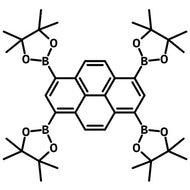
![1,3,5-Tris[4-amino(1,1-biphenyl-4-yl)]benzene](http://www.ossila.com/cdn/shop/files/tabpb-1400987-00-9-chemical-structure-title.jpg?v=1708610226&width=190)
![4',4''',4'''''-(1,3,5-Triazine-2,4,6-triyl)tris([1,1'-biphenyl]-4-carbaldehyde)](http://www.ossila.com/cdn/shop/files/tfbptz-1221509-80-3-chemical-structure-title.jpg?v=1708093553&width=190)
![[1,1':4',1'':4'',1'''-Quaterphenyl]-4,4'''-diamine](http://www.ossila.com/cdn/shop/files/qpda-53693-67-7-chemical-structure-title.jpg?v=1708086116&width=190)
![5''-(4'-Formyl-[1,1'-biphenyl]-4-yl)-[1,1':4',1'':3'',1''':4''',1''''-quinquephenyl]-4,4''''-dicarbaldehyde](http://www.ossila.com/cdn/shop/files/tfbpb-805246-78-0-chemical-structure-title.jpg?v=1708014325&width=190)
![4',4''',4''''',4'''''''-(Ethene-1,1,2,2-tetrayl)tetrakis([1,1'-biphenyl]-4-carbaldehyde)](http://www.ossila.com/cdn/shop/files/tapbe-1624970-54-2-chemical-structure-title.jpg?v=1707929446&width=190)
![[1,1':3',1''-Terphenyl]-3,3'',5,5''-tetracarbaldehyde](http://www.ossila.com/cdn/shop/files/tpta-201734-76-1-chemical-structure-title.jpg?v=1707927322&width=190)
![4',5'-Bis(4-aminophenyl)-[1,1':2',1''-terphenyl]-4,4''-diamine](http://www.ossila.com/cdn/shop/files/baptpda-2458125-05-6-chemical-structure-title.jpg?v=1707921329&width=190)
![Tris[4-(5-formyl-2-thienyl)phenyl]amine](http://www.ossila.com/cdn/shop/files/tta-tpa-883236-47-3-chemical-structure-title.jpg?v=1707918937&width=190)
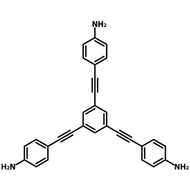
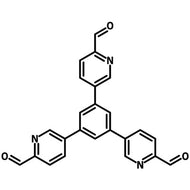
![2,9-Bis[p-(formyl)phenyl]-1,10-phenanthroline](http://www.ossila.com/cdn/shop/files/bfpp-120085-99-6-chemical-structure-title.jpg?v=1707839745&width=190)
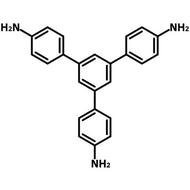
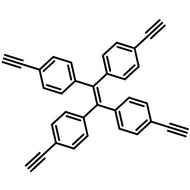
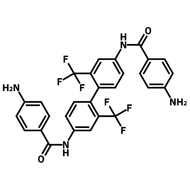
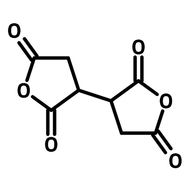
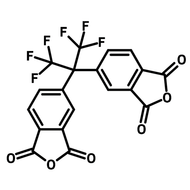
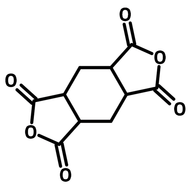
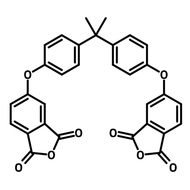
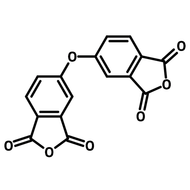
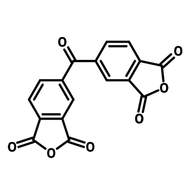
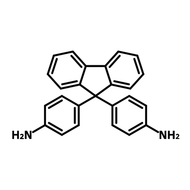
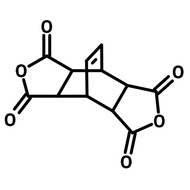
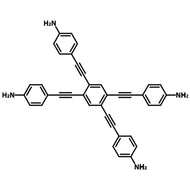
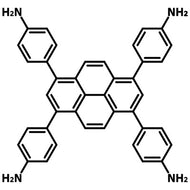
![[1,1':4',1''-Terphenyl]-4,4''-diacetonitrile](http://www.ossila.com/cdn/shop/files/tpdan-1000559-50-1-chemical-structure-title.jpg?v=1702310114&width=190)
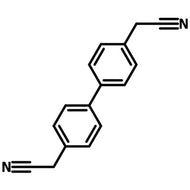
![2,4,6-Tris[4-(4,4,5,5-tetramethyl-1,3,2-dioxaborolan-2-yl)phenyl]-1,3,5-triazine](http://www.ossila.com/cdn/shop/files/tbptrz-1447947-87-6-chemical-structure-title.jpg?v=1702305933&width=190)
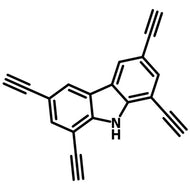
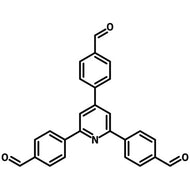
![2',5'-Dimethoxy-[1,1':4',1''-terphenyl]-4,4''-dicarbaldehyde](http://www.ossila.com/cdn/shop/files/tpda-ome-111759-27-4-chemical-structure-title.jpg?v=1702297940&width=190)
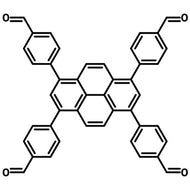
![1,3,5-Tris[(4-phenylboronic acid)]benzene](http://www.ossila.com/cdn/shop/files/tpbab-900795-73-5-chemical-structure-title.jpg?v=1702293555&width=190)
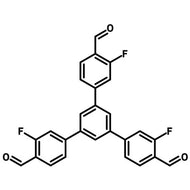
![4,4'-(Benzo[c][1,2,5]thiadiazole-4,7-diyl)dianiline](http://www.ossila.com/cdn/shop/files/btda-1203707-77-0-chemical-structure-title.jpg?v=1702045373&width=190)
![4,4'-(Benzo[c][1,2,5]thiadiazole-4,7-diyl)dibenzaldehyde](http://www.ossila.com/cdn/shop/files/btdba-914651-17-5-chemical-structure-title.jpg?v=1702044113&width=190)
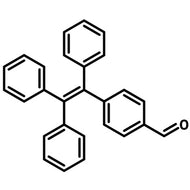
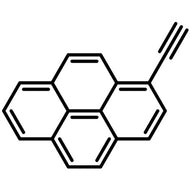
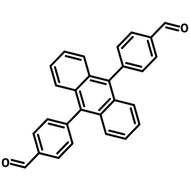
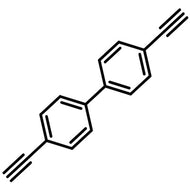
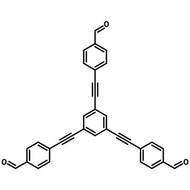
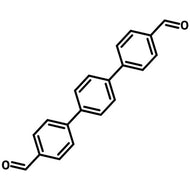
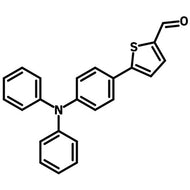
![4',4''',4'''''-Nitrilotris([1,1'-biphenyl]-4-carbaldehyde)](http://www.ossila.com/cdn/shop/files/ntbca-872689-79-7-chemical-structure-title.jpg?v=1701944784&width=190)
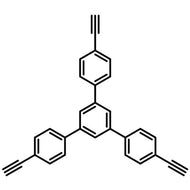
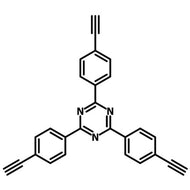
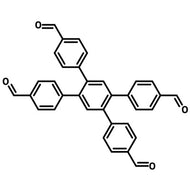
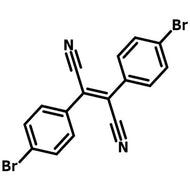
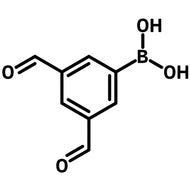
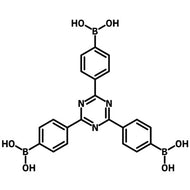
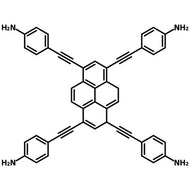
![[1,1'-Biphenyl]-3,3',5,5'-tetracarbaldehyde](http://www.ossila.com/cdn/shop/files/bta-150443-85-9-chemical-structure-title.jpg?v=1700739580&width=190)
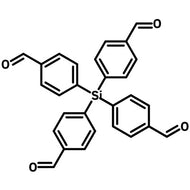
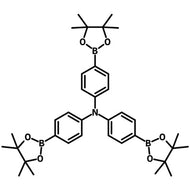
![5'-(4,4,5,5-Tetramethyl-1,3,2-dioxaborolan-2-yl)-[1,1':3',1''-terphenyl]-4,4''-diamine](http://www.ossila.com/cdn/shop/files/5-4-4-5-5-tetramethyl-1-3-2-dioxaborolan-2-yl-1-1-3-1-terphenyl-4-4-diamine-chemical-structure-title.png?v=1700149769&width=190)
![5'-(4,4,5,5-Tetramethyl-1,3,2-dioxaborolan-2-yl)-[1,1':3',1''-terphenyl]-4,4''-dicarbaldehyde](http://www.ossila.com/cdn/shop/files/5-4-4-5-5-tetramethyl-1-3-2-dioxaborolan-2-yl-1-1-3-1-terphenyl-4-4-dicarbaldehyde-chemical-structure-title.png?v=1700133486&width=190)
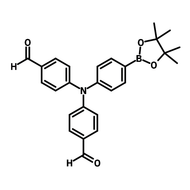
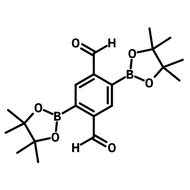
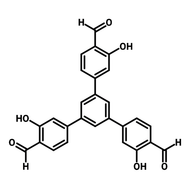
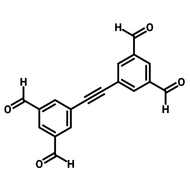
![3,3'-Dihydroxy-[1,1'-biphenyl]-4,4'-dicarbaldehyde](http://www.ossila.com/cdn/shop/files/3-3-dihydroxy-1-1-biphenyl-4-4-dicarbaldehyde-chemical-structure-title.png?v=1699879460&width=190)
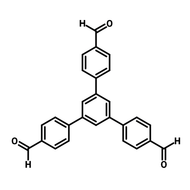
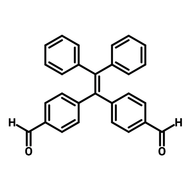
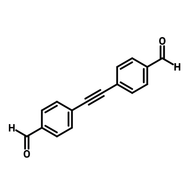
![2,2'-(5'-(4-(Cyanomethyl)phenyl)-[1,1':3',1''-terphenyl]-4,4''-diyl)diacetonitrile](http://www.ossila.com/cdn/shop/files/2-2-5-4-cyanomethylphenyl-1-1-3-1-terphenyl-4-4-diyldiacetonitrile-chemical-structure-title.png?v=1700225015&width=190)
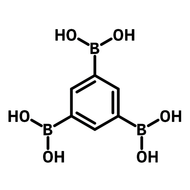
![[3,3-Bipyridine]-6,6-dicarboxaldehyde](http://www.ossila.com/cdn/shop/files/3-3-bipyridine-6-6-dicarboxaldehyde-chemical-structure-title.png?v=1698223775&width=190)
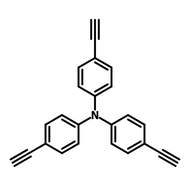
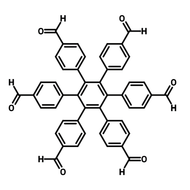
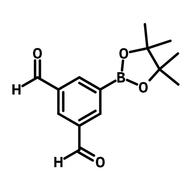
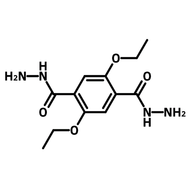
![[1,1'-Biphenyl]-3,4',5-tricarbaldehyde](http://www.ossila.com/cdn/shop/files/1-1-biphenyl-3-4-5-tricarbaldehyde-chemical-structure-title.png?v=1697627856&width=190)
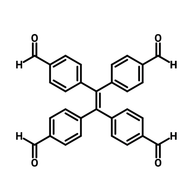
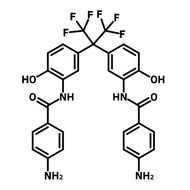
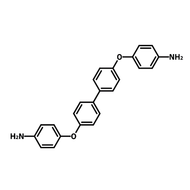
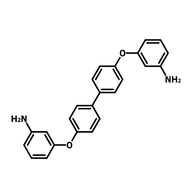
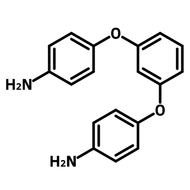
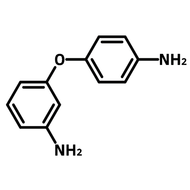
![2,2-Bis[4-(4-aminophenoxy)phenyl]propane (BAPP)](http://www.ossila.com/cdn/shop/products/bapp-chemical-structure-title.png?v=1679403349&width=190)
![2,2-Bis[4-(4-aminophenoxy)phenyl]hexafluoropropane (4-BDAF)](http://www.ossila.com/cdn/shop/products/4-bdaf-chemical-structure-title.png?v=1681225583&width=190)
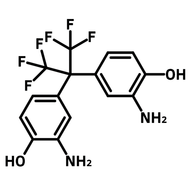
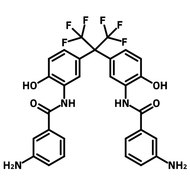
![2,2'-Dimethyl[1,1'-biphenyl]-4,4'-diamine](http://www.ossila.com/cdn/shop/products/2-2-dimethyl1-1-biphenyl-4-4-diamine-chemical-structure-title.png?v=1680597662&width=190)
